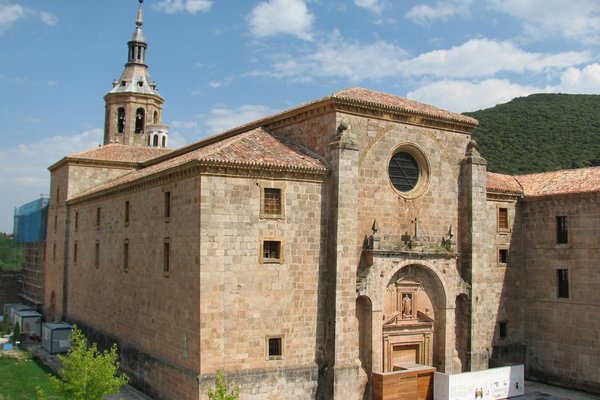Spain
Yuso and Suso Monasteries
The San Millán Yuso and Suso Monasteries are early Christian monasteries known for their role in the development of the Spanish language.
The holy man Millán settled here in the 6th century, was joined by other eremitic monks and a Romanesque church was built on the spot. Suso is the oldest of the two monasteries, and it is the site where phrases in the Spanish and Basque languages were written for the first time. This codex was subsequently preserved in the 16th-century monastery library at Yuso.
Community Perspective: Expect to see many books on your guided tour of Yuso, while what’s left of Suso is one small church. A shuttle bus runs between the two monasteries. You can stay overnight at Yuso as well.
Site Info
Official Information
- Full Name
- San Millán Yuso and Suso Monasteries (ID: 805)
- Country
- Spain
- Status
-
Inscribed 1997
Site history
History of Yuso and Suso Monasteries
- 1997: Inscribed
- Inscribed
- Type
- Cultural
- Criteria
- ii
- iv
- vi
Links
- UNESCO
- whc.unesco.org
- Official
-
- monasteriodeyuso.org — Monasterio de Yuso
All Links
UNESCO.org
- whc.unesco.org — whc.unesco.org/
Official Website
- monasteriodeyuso.org — Monasterio de Yuso
Community Information
- Community Category
- Religious structure: Christian
Travel Information
Guided Tour Only
Recent Connections
-
Perfect Inscriptions
1997 -
Founded after Animal Miracle
Apparently when the monks had laid the … -
Language isolate
Basque (Suso is the older of the two mo…
Connections of Yuso and Suso Monasteries
- Trivia
-
-
Hotels in Historic Buildings
Hotel Hosteria Del Monasterio De San Millan, 4* hotel in wing of Yuso Monastery
-
- Architecture
-
-
Rococo
Tables in Yuso -
Pre-Romanesque
Suso: Visigoth and Mozarabic parts -
Baroque
Interior of Yuso
-
- World Heritage Process
-
-
Perfect Inscriptions
1997
-
- Religion and Belief
-
-
Founded after Animal Miracle
Apparently when the monks had laid the remains of the holy man San Milan on a cart, the oxes who were pulling the thing refused to do their work on a certain point and could not be made to continue. It was seen as a sign and so this point was chosen as the spot where the new monastery was to be built. -
Augustinian Order
Yuso Monastery is now inhabited by Augustinians
-
- Human Activity
-
-
Historical Graffiti
Suso: "the walls of the atrium are covered with graffiti written by pilgrims and monks in the 11th and 12th Centuries". -
Language isolate
Basque (Suso is the older of the two monasteries, and it is the site where phrases in the Spanish and Basque languages were written for the first time) (Basque is sometimes connected to Northeast Caucasian)See en.wikipedia.org
-
- Constructions
-
-
Tombs
Suso
-
- WHS on Other Lists
-
-
Europa Nostra Award
(Prize 2011 for Restoration and Education)
-
- Timeline
-
-
Built in the 6th century
"In the mid 6th century the holy man Millan settled at a site, now known as the Suso ("Upper" or "Above") Monastery,....... During the lifetime of the saint a small mnonastery was built on the hillside in Visigothic style. This was enlarged in the 7th century...The church was rebuilt in 929.....". Yuso was built in the 16th century" Well which would you choose? Could have a separate one for Yuso as well. Seems to me that the "heart" of the site is the original Suso cave etc of 6th C
-
- WHS Hotspots
- Science and Technology
-
-
Libraries
Yuso
-
- Visiting conditions
-
-
Guided Tour Only
Frequent daily tours, except for Monday
-
- WHS Names
-
-
Named after a local Christian saint
San Millan: named after Saint Aemilian, a hermit (Feast Day: November 12), who lived in the Suso cave on the site.
-
News
No news.
Recent Visitors
Visitors of Yuso and Suso Monasteries
- Adolfo
- Alexander Barabanov
- Alexander Lehmann
- Ammon Watkins
- Ana
- Anna Wludarska
- Antonio J.
- Argo
- Atila Ege
- awestix
- BaziFettehenne
- Bin
- Bram de Bruin
- Bruno_Pires
- campmany
- Carlos Sotelo
- Caspar
- CeeMon
- Cheryl
- Chinmaya
- Christravelblog
- Claire Bradshaw
- Clyde
- Csaba Nováczky
- Daniela Hohmann
- Daniel Chazad
- Dolemite92
- Dorejd
- Echwel
- Elaine McArdle
- Els Slots
- Emilia
- Erik Jelinek
- Eva Kisgyorgy
- fabi-ddorf
- Fan Yibo
- Feldhase
- Femke Roos
- Filip Murlak
- GeorgeIng61
- Gernot
- Harry Mitsidis
- Hubert
- Iain Jackson
- Ivan Rucek
- Jakob F.
- Janina Lehmann
- Jarek Pokrzywnicki
- Jasam
- Javier
- Jean Lecaillon
- Jeanne OGrady
- Jens
- Jezza
- Joel on the Road
- Jonas Kremer
- Joyce van Soest
- Juha Sjoeblom
- Kbecq
- Ken DJ
- Kevin247
- krtek
- Kurt Lauer
- Lara Adler
- LaVale
- Lisu Marian
- Little Lauren Travels
- Loic Pedras
- Luboang
- Luis Filipe Gaspar
- Maciej Gil
- Mathijs
- MAURO PODDA PANI
- MaYumin
- MH
- Michael Novins
- michaelsballard
- Mikan22
- Mikko
- Milan Jirasek
- MMM
- napalm
- Nihal Ege
- PabloNorte
- Patrik
- Paul Schofield
- Petteri
- Philipp Leu
- Philipp Peterer
- Piotr Wasil
- Porcho
- Randi Thomsen
- Reza
- rogerding
- Roger Ourset
- Roman Bruehwiler
- Sandmann15
- scubarrie
- Sergio Arjona
- Shandos Cleaver
- Simonf
- Solivagant
- Stanislaw Warwas
- Stijn
- Svein Elias
- Szucs Tamas
- Tamara Ratz
- Taotao Chen
- Tarquinio_Superbo
- Thomas Buechler
- Thomas Harold Watson
- Thomas van der Walt
- Tim Allen
- Vanessa Buechler
- Van Hung
- Viaje al Patrimonio
- voyager
- Walter
- Wojciech Fedoruk
- Xander Huang
- Xiong Wei
- Xiquinho Silva
- Zhenjun Liu
- Zoë Sheng
Community Reviews
Show full reviews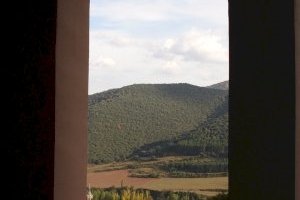
I visited this site in 2006 when I didn't think a lot about WHSs yet and hadn't seen many sites. Even then we found it surprising if not ridiculous that this site should be a WHS. The site consists obviously of two sites: Suso the upper monastery is tiny but has a certain charme with visigothic and mozarabic elements that I would certainly appreciate today though they have hardly any OUV on their own. Yuso, the lower monastery, on the other hand, lacks any special character or beauty. There are dozens of more interesting monasteries in Spain alone.
Even in the nomination the claim for fame does not mainly refer to the architecture: "It was here that the first literature was produced in Castilian, from which one of the most widely spoken languages in the world today is derived". and: "The Spanish language, a principal work of human creativity, was born, in both spoken and written forms and in both prose and verse, within the eremitic communities of San Millan". I think this accumulates several strange assumptions: The fact that the oldest preserved written sentences of Castilian are found here does not prove that this language was created here or even written down for the first time. And to call Spanisch a "principal work of human creativity" is hard to believe. It is one of many Latin dialects and as such not more valuable then any other Roman language. That fact that it was later spread around have of …
Keep reading 0 comments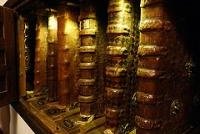
I visited this WHS in August 2014. After some reading and research I decided to concentrate my visit mostly on the Yuso Monastery which is the bigger one of the two. It costs 6 euros to visit and we were accompanied by a Spanish guide throughout the visit. A leaflet in English containing the gist of what she says in Spanish is handed out but it isn't really all that necessary. The Yuso monastery houses the first verses written in the Castillian language so it is an important national cultural site apart from being a WHS. The church cloister and gilded furniture are nothing out of the ordinary compared to other WHS I've seen. The sacristy though is beautiful. The Books of Gregorian Chant weighing up to 80kg were the highlight of my visit. Two treasures worth seeing are the boxes/chests decorated with the original 12th century ivory plates of San Millan intricately carved and in very good condition. The exterior is worth a quick photo mostly for the serene environment surrounding the Yuso monastery. The Suso Monastery is very small compared to the Yuso Monastery and there is a shuttle bus that takes you there and back every 15 minutes departing from in front of the Yuso Monastery. Entrance tickets (inclusive of shuttle bus service) are sold at the Yuso Monastery. I enjoyed my visit as another stopping point on my return road trip from Portugal but it's definitely not one of Spain's best WHS in my opinion.
Keep reading 0 comments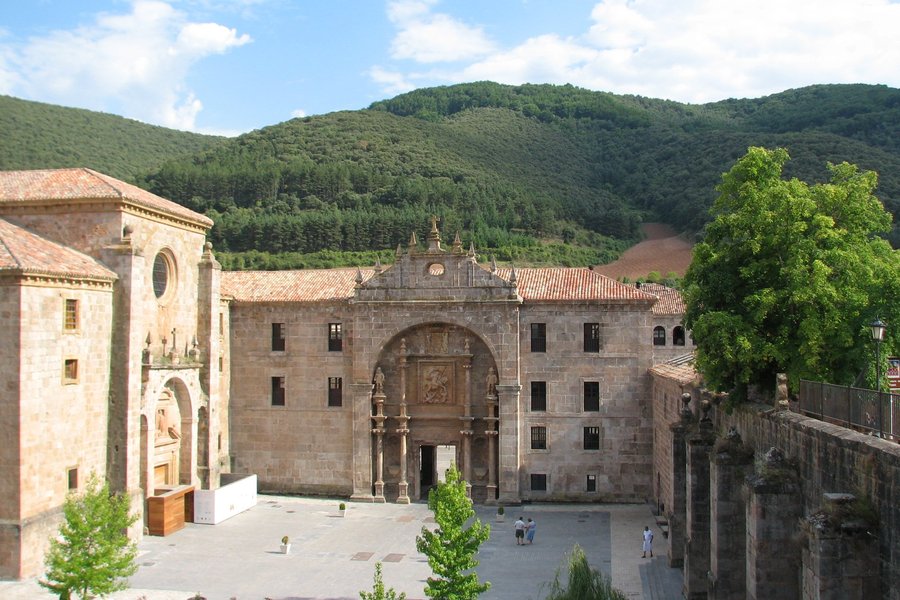
My husband and I are, at present, staying in the Yuso hostelerie. We have done the tour and visited Suso this morning. We walked back through the woods glimpsing deer on the way.
It is Sunday. Staying in a monastery we looked forward to daily Mass and special celebration today but no............. we will have to go to the chapel in the village since no mass is said in church - at least not for visitors. What a terrible waste of resources.Such atmosphere, such history and the centre of it all ignored!
Keep reading 0 comments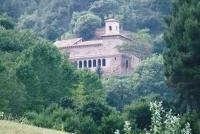
The village of San Millan de la Congolla was picturesque and set in an amazing landscape.
I reached it by a bus that travels there in the afternoon from Logrono via Najera, and returns in the evening allowing several hours for a visit to the Yuso and Suso monasteries.
I found the displays of the earliest books in the Castillian language in the Yuso monastery very interesting. Because the bus to Suso was not operating on the day of my visit I hiked up the hill through the forest to see this ancient building.
Keep reading 0 comments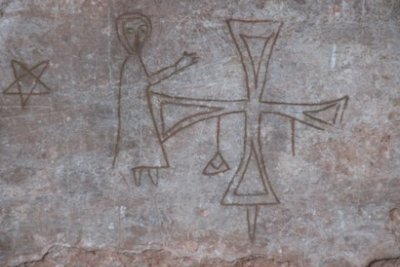
Yuso Monastery is an impressive complex when you first arrive. And popular with the tourists as well. Entrance is only via a guided tour, which costs 4 EUR. The tour (with ca. 40 people) lasts about an hour. It’s a tiring affair for non-Spanish speakers, as the guide will stop often for long talks. It will take you through all the important rooms, however. Especially the Sacristy is a feast of paintings, furniture, frescoes and a golden altar. The church is under restoration at the moment, and all the decorations are packed in a paper (as if the artist Christo had stopped by).
Yuso’s older sister, Suso, is located uphill. When you’ve bought a ticket, a bus will take you there to go on a guided tour. What’s left of Suso is only the church. So it’s only one room, quite tiny. This guide also starts a long story before we can enter the building. No photos are allowed inside, but this is not strictly reinforced. The interior is almost empty, except for graves. What I liked most was the medieval graffiti on the outside of the building.
I stayed overnight in the ‘Hosteria del Monasterio de San Millan’, which is located in a wing of the Yuso Monastery. It’s one of our ‘Hotels in Historic Buildings’! The long hallways give it away that you’re in a monastery. I guess the hotel is quite new, the room at 60 EUR was pretty modern and luxurious (it has a …
Keep reading 0 comments
